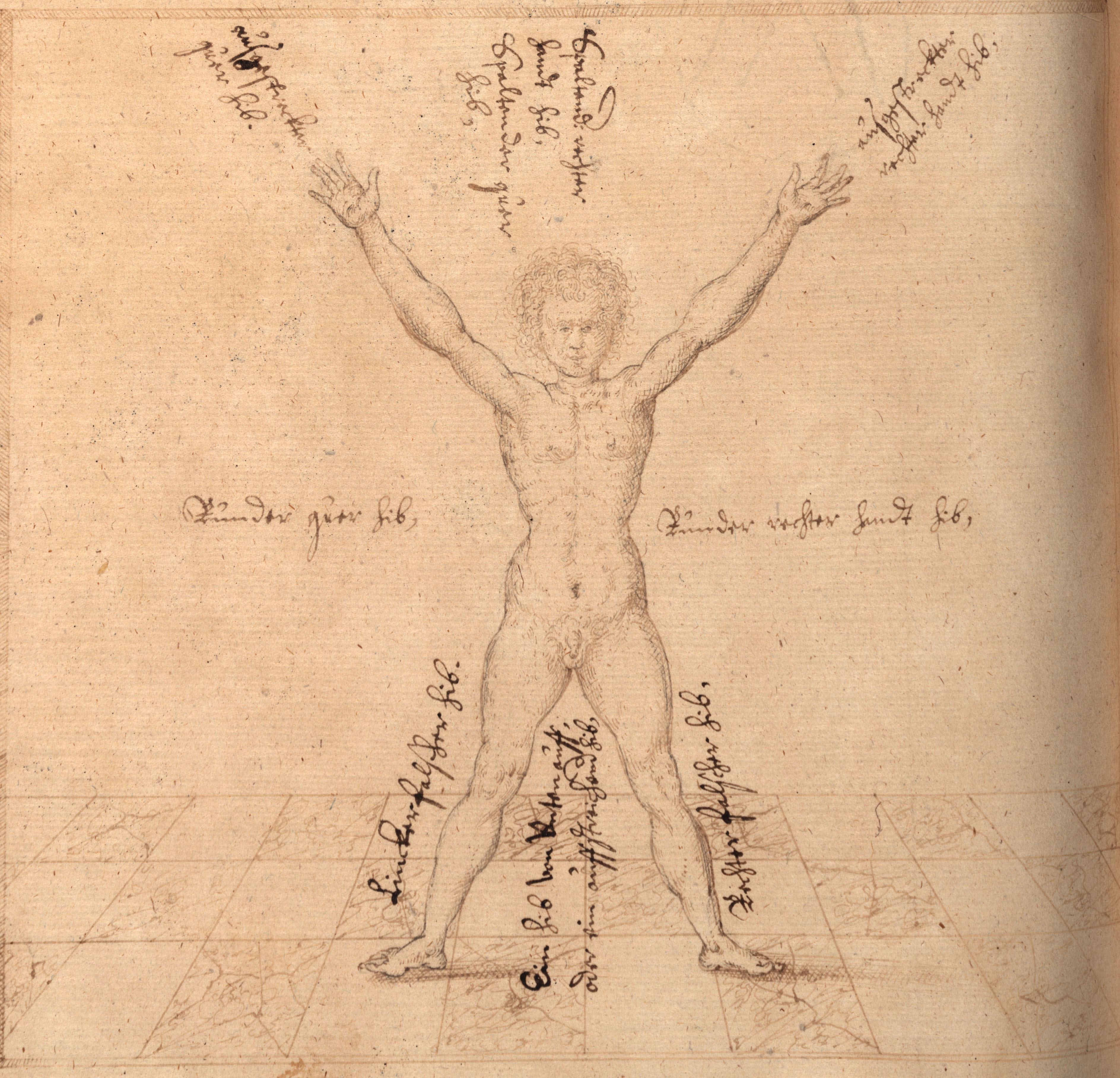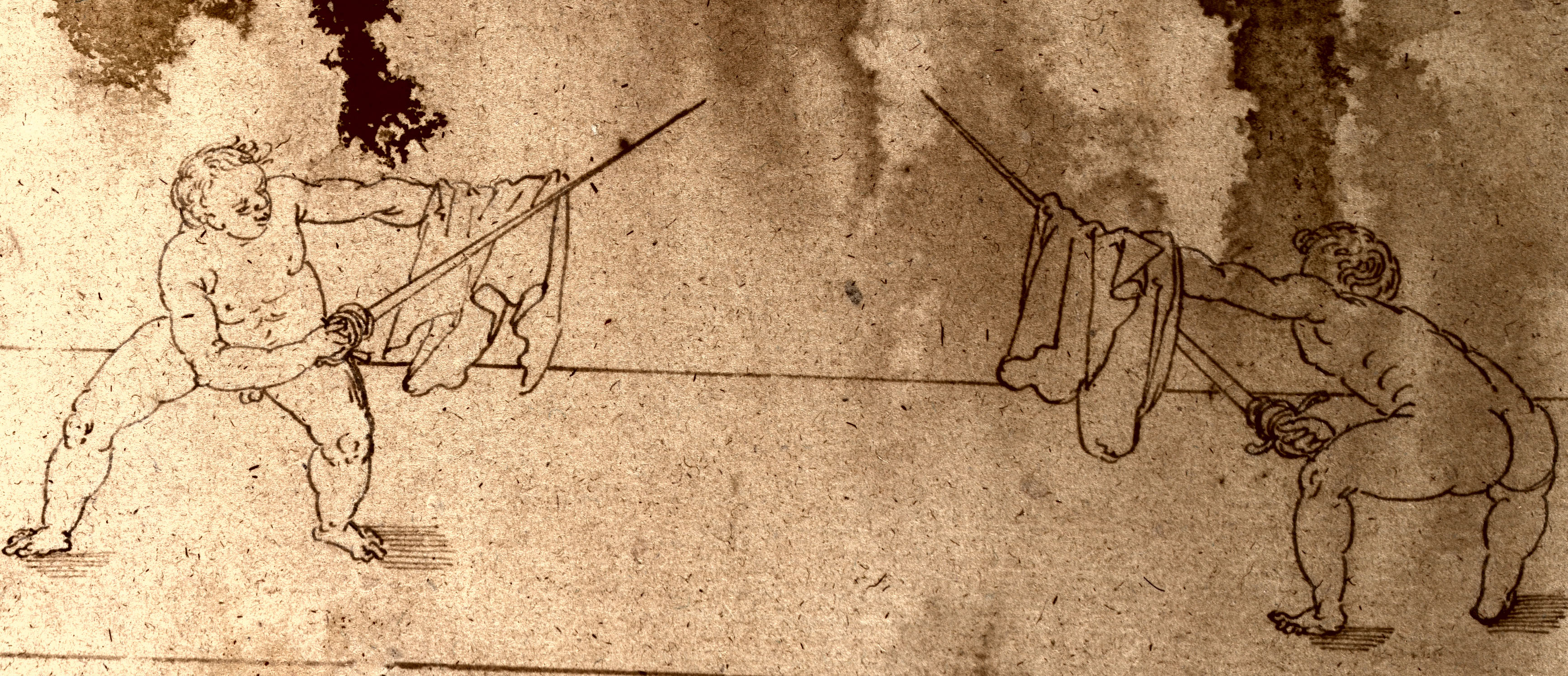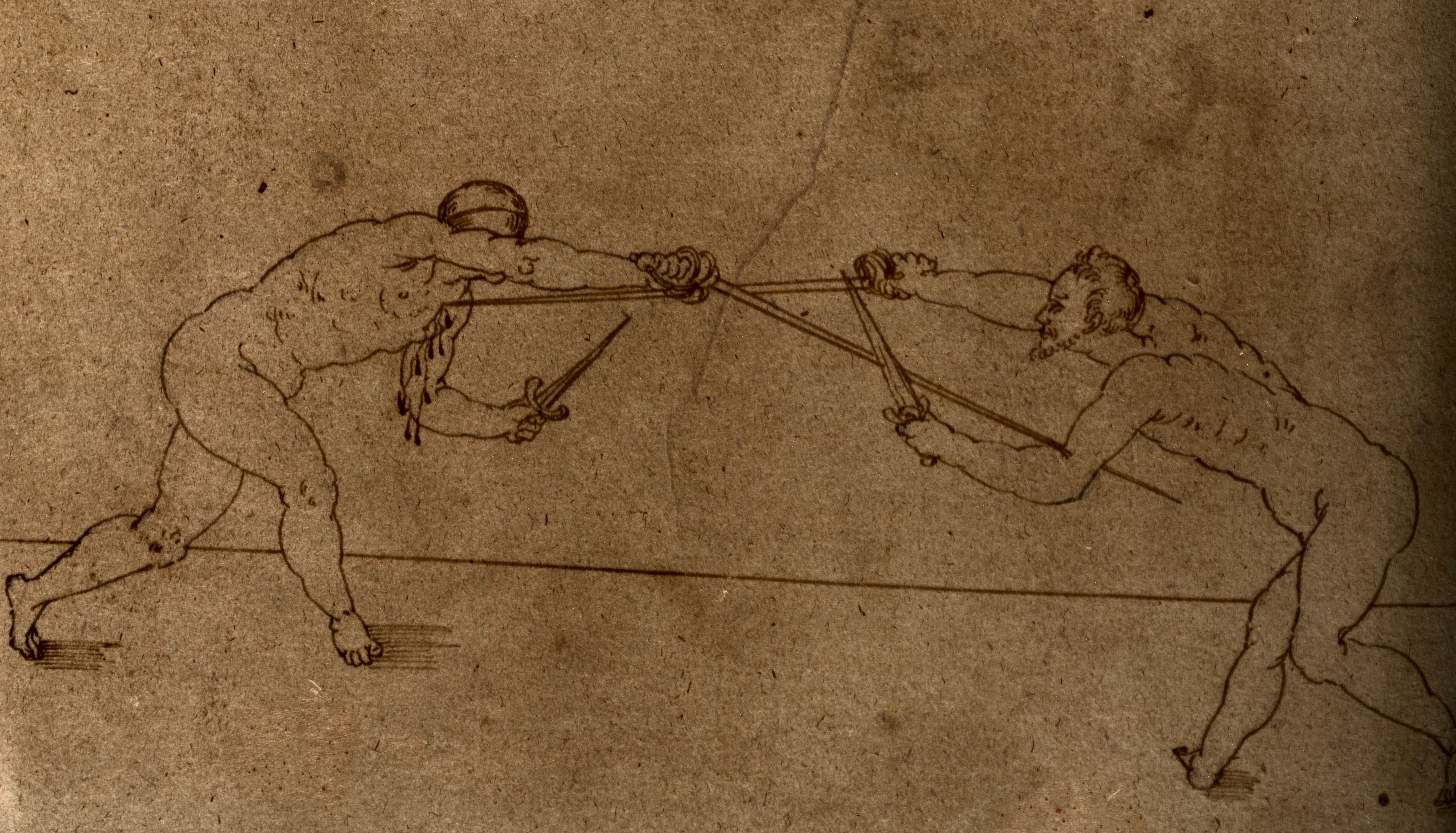Unearthing an unknown Renaissance fencing manual
The Sächsische Landes- und Universitätsbibliothek (SLUB) in Dresden, Germany, holds several of the most important late medieval and Renaissance fencing manuals (Fechtbücher). The first is by the famed Johann Lichtenauer, the grand master of German fencing. The next is a two-volume series on the combat arts by Paulus Hector Mair from 1542.
Overlooked in the collection, though, is a work entitled Italienische Fechtkunst: 400 Regeln (The Italian Art of Fencing: 400 Rules), possibly by the little known Johann Christian. The Wiktenauer website, the world’s foremost authority on historical European martial arts (HEMA) books and manuscripts, has only one line about its contents.
As the title suggests, this manuscript treats the use of the rapier after the Italian fashion
If that sounds a bit vague, there is a reason. First, it doesn’t actually have a title, at least no longer, and second, no one alive has ever read it.
 Japanisches Palais
In 1945, in the bombing of Dresden, the library manuscript collection, which was being stored temporarily in the Japanisches Palais, was hit and many of its books and manuscripts were damaged by both fire and water. One of these was a 90-folio manuscript, Ms. Dresden C.91, written in iron gall ink on paper in an elegant, German Kurrentschrift. The manuscript had gotten wet and the ink was washed off the manuscript leaving it almost completely illegible.
Japanisches Palais
In 1945, in the bombing of Dresden, the library manuscript collection, which was being stored temporarily in the Japanisches Palais, was hit and many of its books and manuscripts were damaged by both fire and water. One of these was a 90-folio manuscript, Ms. Dresden C.91, written in iron gall ink on paper in an elegant, German Kurrentschrift. The manuscript had gotten wet and the ink was washed off the manuscript leaving it almost completely illegible.
Multispectral recovery
In July of 2019, I went with the Lazarus team to Dresden, where I used to live, to image a mappamundi (medieval world map) and an early manuscript of Dante’s Commedia. Because we had some extra time, I asked whether we could get access to MS c.91. We ended up imaging about 30 folios as a pilot project, with me running the camera and capture system. We captured 30 images per side, in 16 wavelengths, 10 filtered fluorescent bands, and 4 transmissive bands. Over the past couple of years, I have been slowly processing the images to make the writing and illustrations of fencing positions as legible as possible. For this, I used ENVI, an image processing software used in remote sensing, that allows statistical algorithms to be applied to the images to separate text from the background noise in 16-dimensional space. I have been alternating between two methods: a simple band ratio of a fluorescent band divided by the infrared at 940nm, and the Minimum Noise Fraction (MNF) algorithm. I have also used ENVI to perform a spectral analysis of inks used for the diagrams and for the text to determine whether the scribe is the same person as the illustrator.
Codicological analysis
Examining the first few folios, I was able to learn a surprising amount about the manuscript from the processed images.
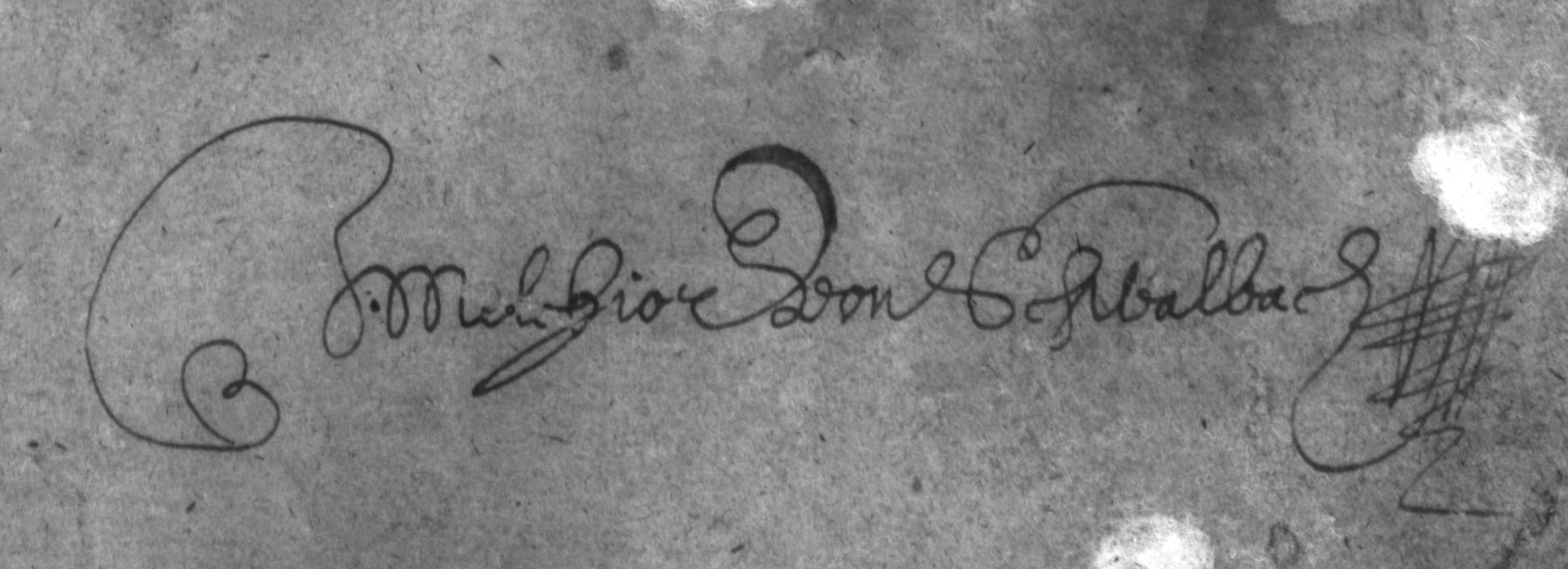
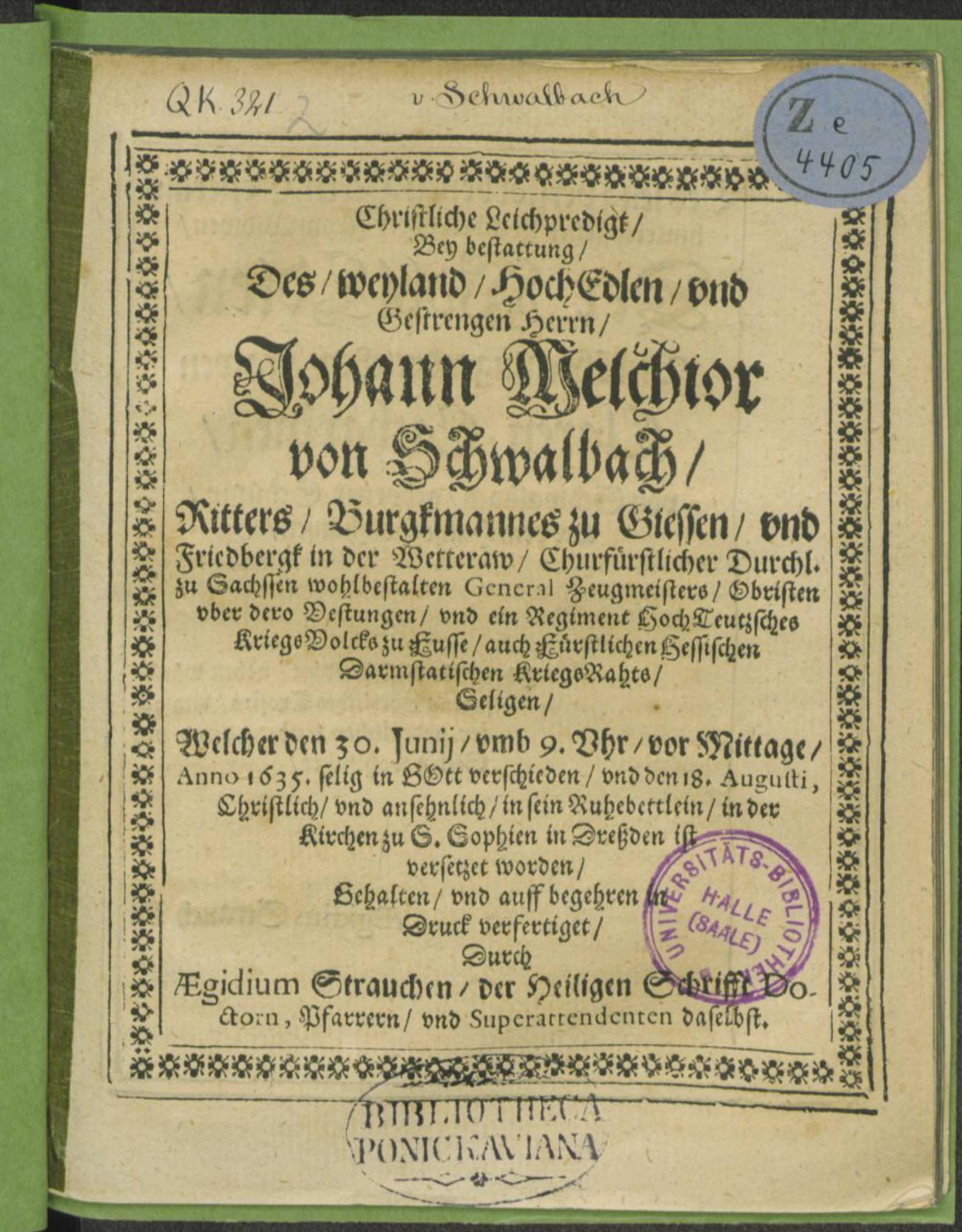



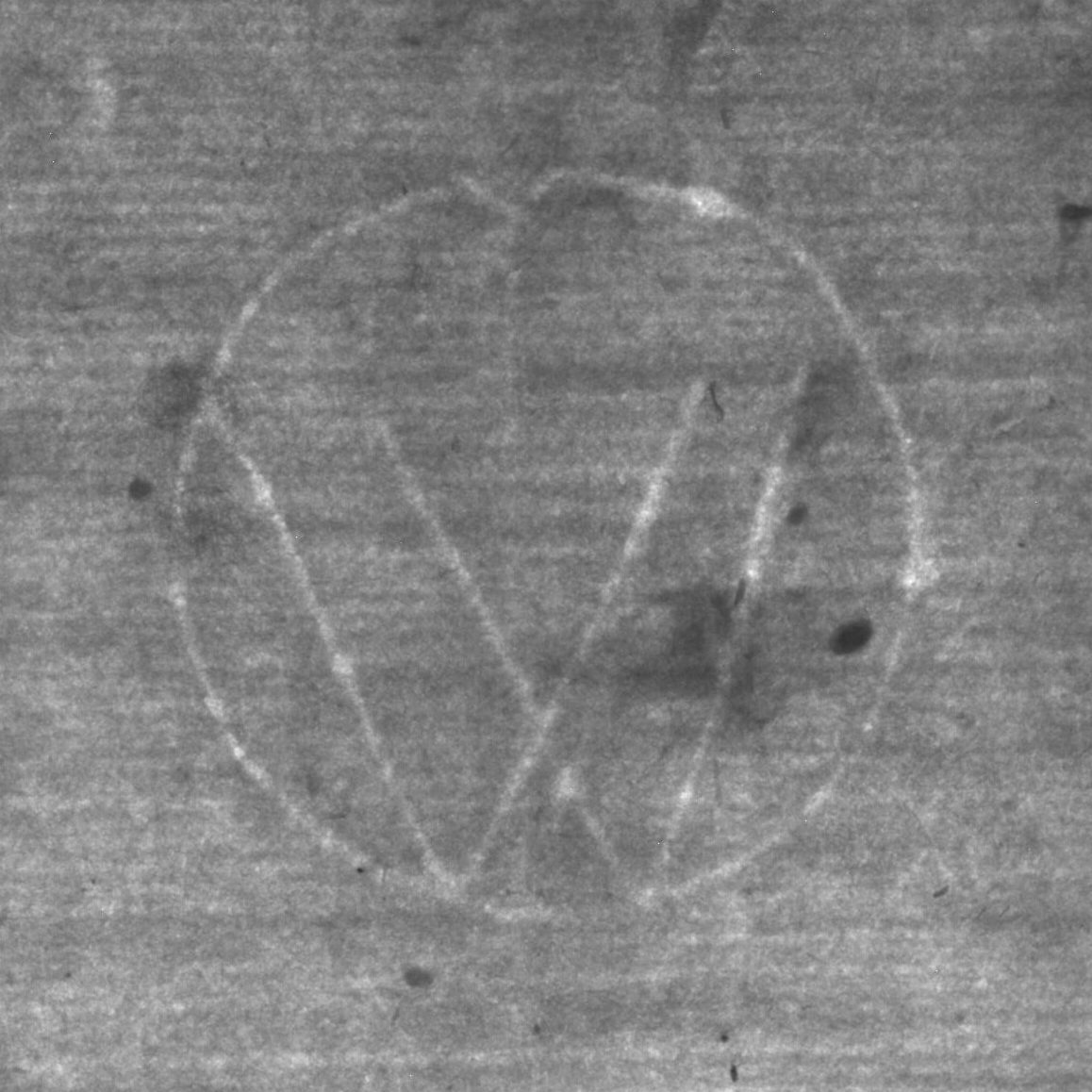
First, in the lower right hand corner of folio 1r is the manuscript owner’s name: Melchior von Schwalbach (Fig. 1.A). A quick search revealed that he served as a Lieutenant General (Feldzeugmeister) and Commandant of the Dresden Residence under Gustav II of Sweden, and lived from 1581-1635, dying in Dresden. Figure 1.B is an original printed copy of the eulogy given for him at the Sophienkirche in Dresden at his funeral, an indication of his status and wealth at the time.
Could Schwalbach have been the author or copyist of the book? Unlikely. First, although a military man, he wouldn’t have had the time or likely the knowledge to write such a book. From a paleographical perspective, the handwriting of his signature is naive and untrained. Using ENVI, I have attempted to show, also, a difference in the chemistry of the ink he used as compared to that of the text. MSI can be used not only for recovering invisible text, but also as a form of basic spectroscopy for identifying the spectral “fingerprint” of every type of ink, pigment, or material. Every substance absorbs and reflects light in a unique pattern. In hyperspectral imaging or spectroscopy, reflectance and absoption of light hitting the inks, pigments and materials are measured in hundreds of wavelengths. In MSI, there are only a few (here 16 wavelengths and 30 bands including fluorescent and transmissive bands). That means that MSI can be used only for a very rough analysis rather than to identify exactly the spectroscopic response. In other words, it can tell you there is a difference, but not enough to say what that difference is chemically. Figure 1.C shows the Z-profile (spectral response) of 4 different pixels: the purple line is the paper, the green line is the text ink, the orange line is the ink from Schwalbach’s signature, and the white line, for comparison, is from the numbers on each folio written in the upper left hand corner in a 20th century hand.
The lines are mostly a measure of how brightly the paper reflects light. The various inks prevent the paper from reflecting light largely based on how dense they are on the page. The spectral response of the text ink (green), is only only slightly different from that of the paper because it is the faintest ink on the manuscript. By contrast, the signature ink (orange) and the number ink (white) are the densest. The white I used as a comparison because I know that it is pencil. The reason is that where iron gall ink turns gray in the infra red, disappearing totally by 940nm, carbon stays black all the way through the mid IR (3000nm). That effect is easy to see in band 16 (940 IR) where the only writing visible on the page is the number, proving it is carbon in the form of graphite. My point, though, is that the Schwalbach ink shows a significant difference in the fluorescent bands, especially bands 19 ( royal blue at 450nm through an orange filter) and 22 (royal blue 450nm through a red filter). In other words, the inks are different and therefore not used by the same person.
Next, at the outer right margin, a faint capital “R” (figure 2.A) has been cut off from the text of a word or phrase, indicating that the edges of the manuscript had been trimmed significantly by a few centimeters. That the gutters of the versoes are extremely narrow suggests that the manuscript was probably disbound after being damaged, then trimmed, and rebound. The damage was also clearly from water. A thumbprint (figure 2.B), visible only in the UV, indicates that an untrained person had picked up the manuscript in 1945 when it was wet and when the ink had run, leaving an ink-smudged print. Finally, and perhaps most interesting, is the watermark on folio 2 (figure 2.C), visible only in the IR transmissive images (940nm). The circled “W” mark is attested in a few other known examples, the earliest in the early 17th century from a book printed in Augsburg. This provenance for the paper and likely also the printing makes sense. The famed German school of fencing had its center in the Late Middle Ages in the three southern cities of Augsburg, Frankfurt, and Nürnberg.
Toward a new edition
As I slowly make my way through the transcription of the text, I will post the transcriptions, along with English translations. In the meantime, here are a couple more of the fencing diagrams from the manuscript. I also hope to figure out the mystery of why they are fencing naked (ouch!).
